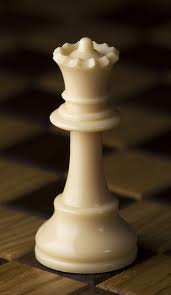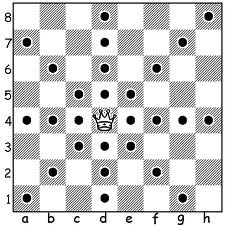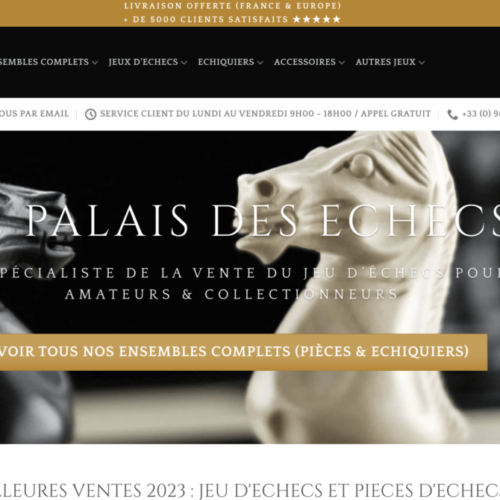In order to become a good chess player (or even just a chess player who knows what they’re doing), you need to know what the pieces are, how they move, what they can and can’t do, and how many points they’re worth
Each player has the same pieces and the same number of each piece to start with. Each player begins the game with 8 Pawns, 2 Rooks, 2 Knights, 2 Bishops, 1 King and 1 Queen. Each piece moves in a special way and each is worth a point value (used to figure out if you’re winning or losing at any point in the game, not counting positional advantages). It’s a lot of information, so to make it more manageable, I’ve split it into 2 parts. Part 1 deals with the King, Queen and Rook, while part 2 deals with the minor pieces and Pawns.
I’m going to start with the King. Most chess instructors will begin a lesson on pieces with the Pawn because it’s worth the least amount of points. However, the Pawn is perhaps the trickiest piece to use for someone just learning how to play. I don’t want you to feel overwhelmed with the first piece, so we’ll save the Pawn for last and start with the piece that has the least moving power…
The King
The King is the most valuable piece on the board. He is worth an infinite amount of points if you capture him. Infact, he is SO valuable, that you can actually win the game just by THREATENING to capture the king, but we’ll get to that in the next blog. Right now, you need to know 2 things about the king: how he moves and how many points he’s worth. As stated, the king is worth infinity points! Pretty cool, huh? To make up for his incredible point value, though, he is the piece with the least amount of movement. He is able to move in any direction he wants, but only one space at a time. There is one exception to this called “castling”, which we’ll get into shortly. To illustrate the his usual movement, here is a picture of a king on the board. The black dots indicate what spaces the King can move to from the square he’s currently on:
The next valuable piece is the other member of the royal family.
The Queen
The Queen is worth 9 points (not nearly as high as infinity, but still much higher than any other piece on the board). In many cases, capturing the Queen will give you a much more sure victory over your opponent! However, the Queen is very hard to catch. Like the King, she’s able to move in any direction she wants. The reason she’s so hard to capture, though, is that she can move as many spaces as she wants (as long as she doesn’t have to go through any other pieces… only the Knight is capable of such a maneuver)! The diagram below shows the queen in a spot on the board, and all the spaces she can move to in one turn.
The next piece we’ll look at are the palace walls themselves…
The Rook
You begin the game with 2 Rooks, each one worth 5 points. Rooks are able to move horizontally or vertically (your choice) as many spaces as they want (again, as long as they don’t have to go through another piece). Here’s an illustration to show it’s movement potential.
Remember that move I mentioned called “Castling”? It involves the King and the Rook. Castling is a way of protecting the King. It may be done by each opponent only once. You may castle to either the King side or the Queen side. When you castle, you will move the King TWO spaces toward the Rook, and then put the Rook immediately to the other side of the King. It will look like this (the animation demonstrates for both white and black how to castle on the king side and how to castle on the queenside):
I will likely go into more detail of castling (when to do it, when not to do it, how to do it, how not to do it, and why you’d want to do it at all) in a future blog. But for now, you just need to know what the move is… the King goes 2 spaces toward the Rook, the Rook goes on the other side of the King.
In Part 2 of this lesson, we’ll talk about the “minor pieces” (Bishops and Knights) and Pawns.









